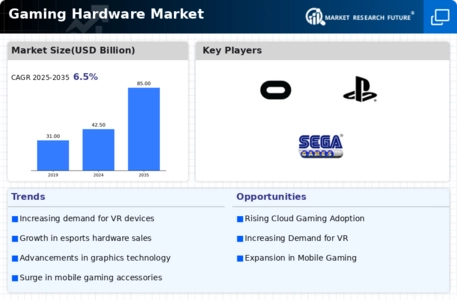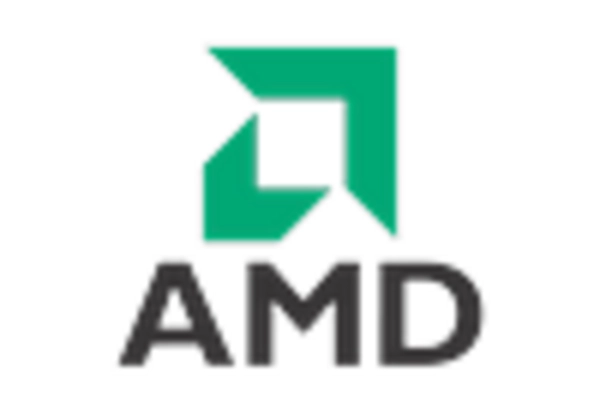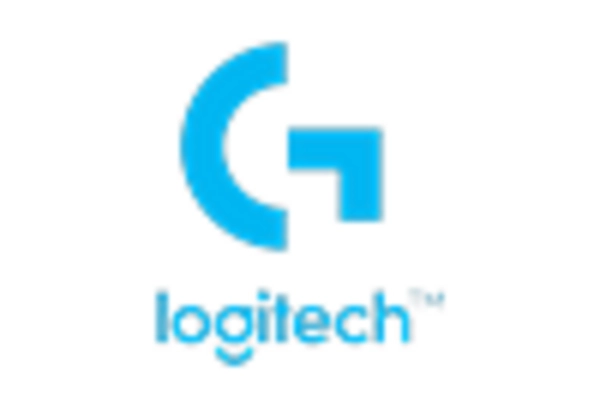Market Trends
Key Emerging Trends in the Gaming Hardware Market
The gaming hardware market is witnessing several noteworthy trends that are reshaping the industry and influencing consumer choices. One prominent trend is the increasing demand for high-performance components driven by the continuous evolution of gaming technology. Graphics processing units (GPUs) are at the forefront of this trend, with gamers seeking more powerful and efficient solutions to handle graphically intensive games. This demand for enhanced performance extends beyond traditional PCs to gaming consoles and even mobile devices, reflecting a growing expectation for immersive gaming experiences across platforms.
Another significant trend in the gaming hardware market is the rise of esports and competitive gaming. As esports gain mainstream popularity, there is a corresponding surge in demand for specialized gaming peripherals. Professional and amateur gamers alike seek gaming mice, keyboards, and headsets that offer precision, speed, and comfort to gain a competitive edge. This trend has led to the development of esports-focused hardware, catering to the unique needs of competitive gamers and reflecting the industry's shift toward a more professionalized landscape.
Virtual reality (VR) and augmented reality (AR) gaming experiences are also influencing market trends in the gaming hardware sector. The quest for immersive gameplay has driven the development of VR headsets, motion controllers, and other peripherals that enhance the virtual gaming experience. As VR technology becomes more accessible, it is expected to contribute significantly to the growth of the gaming hardware market, offering a new dimension to gaming that goes beyond traditional screens.
Cross-platform gaming is emerging as a trend that shapes the gaming hardware market. With games being played across a variety of devices, from PCs and consoles to smartphones and tablets, there is an increasing demand for versatile and cross-compatible peripherals. Gaming hardware manufacturers are responding by designing products that seamlessly integrate with multiple platforms, providing gamers with a unified and consistent experience. This trend aligns with the broader industry shift toward a more interconnected gaming ecosystem.
The accessibility of gaming has become a focal point in recent market trends. Entry-level and mid-range gaming peripherals are gaining popularity, making high-quality gaming experiences more affordable for a broader audience. This democratization of gaming hardware contributes to market growth by expanding the consumer base and enticing newcomers to the gaming community. Manufacturers are recognizing the importance of catering to both hardcore enthusiasts and casual gamers, leading to a diverse range of products at various price points.
Customization and personalization are key trends influencing the gaming hardware market. Gamers are increasingly seeking products that allow them to express their individuality and preferences. RGB lighting, customizable key mappings, and modular designs are becoming standard features in gaming peripherals, giving users the ability to tailor their setups according to their aesthetic and functional preferences. This trend reflects a shift from one-size-fits-all solutions to a more personalized and user-centric approach in gaming hardware design.
Sustainability is emerging as a growing trend in the gaming hardware market. As environmental awareness increases, consumers are showing a preference for eco-friendly and energy-efficient gaming hardware options. Manufacturers are responding by adopting sustainable practices in production, using recyclable materials, and designing products with longevity in mind. This trend reflects a broader industry commitment to addressing environmental concerns and resonates with consumers who prioritize sustainability in their purchasing decisions.








Leave a Comment